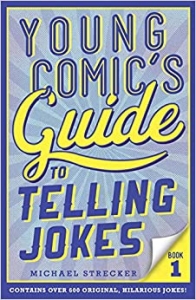NASA Isn’t Looking for Astronauts
As a speaking agent, James Marshall Reilly explains in the book One Great Speech, his biggest challenge is locating and identifying “experts” in varying fields, based on the requests of buyers and event sponsors. Reilly is looking for people as yet unknown in the speaking world. But don’t be confused, he cautions – when Bank of America wants to pay for a speaker, they’re not looking for a banker or financial services expert. The State Department isn’t looking for a diplomat, and NASA isn’t seeking a speaker who’s an astronaut. These organizations have plenty of their own in-house experts.
So what are these mega-company meeting planners seeking?’ Reilly says it’s someone with:
- a unique perspective
- a new idea
- new information
- passion
- a story that resonates
Reilly’s insights sure resonated with me. As blog content writers, those are the very qualities we’re aiming for in helping our clients’ stories resonate with their target audiences.
Unique perspective
The typical website explains what products and services the company offers, who the “players” are and in what geographical area they operate. The better websites give at least a taste of the corporate culture and some of the owners’ core beliefs. It’s left to the continuously renewed business blog writing, though, to “flesh out” the intangibles, those things that make a company stand out from its peers. In other words, it’s the blog that gives readers context within which to process the information.
But, from whose perspective? We can use blogging to offer searchers the relevant, up to date information they came to find, giving it to them in short paragraphs and in conversational style, then leading them to take action. But it’s crucial to present information from the customer’s perspective, not ours. Where we are is never the starting point!
Passion resonates
When online readers find a blog, one question they need answered is “Who lives here?” In terms of achieving Influencer status – it takes passion, and it takes opinion, we’ve learned at Say It For You. Sharing the obvious slant may be vociferous, but if it’s not passionate, it won’t resonate with readers.
Information
Very much like the folks most likely to be in attendance at a Bank of America or NASA conference, blog site visitors are already interested in the subject at hand and may already know quite a bit of information on that subject. While there’s very little likelihood that the “startling statistics” you offer to capture readers’ attention will be “new news”, facts and statistics need to be “unpackaged” and put into perspective.
No, Bank of America may not be looking for a speaker with a finance degree, and NASA may not hire an astronaut for the keynoter at their conference. But if you can turn information into stories that resonate in your blog posts, online readers may just “hire” -YOU!






Follow us online!